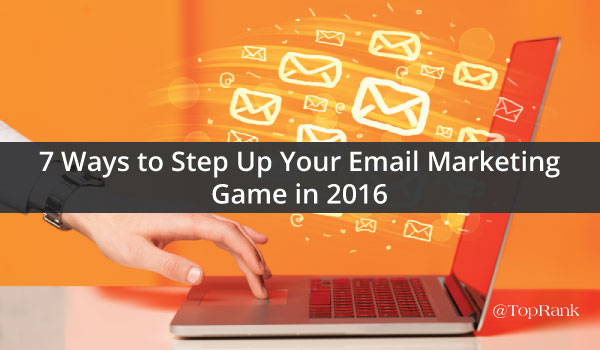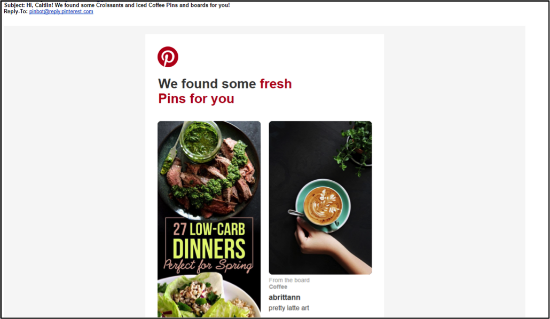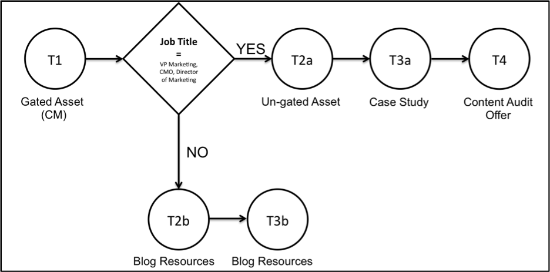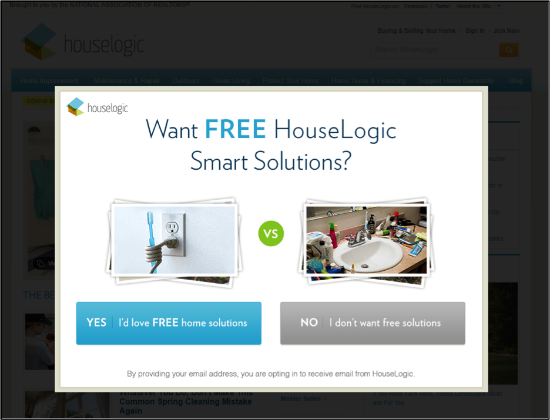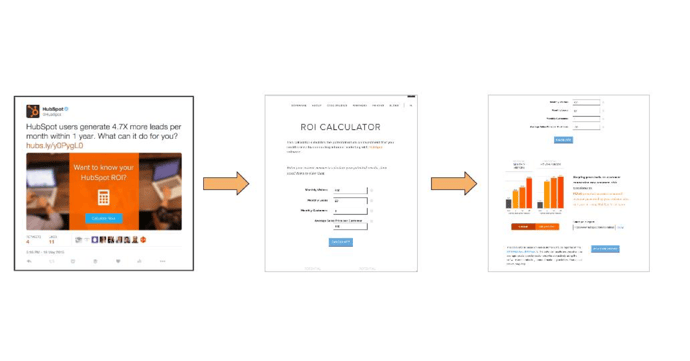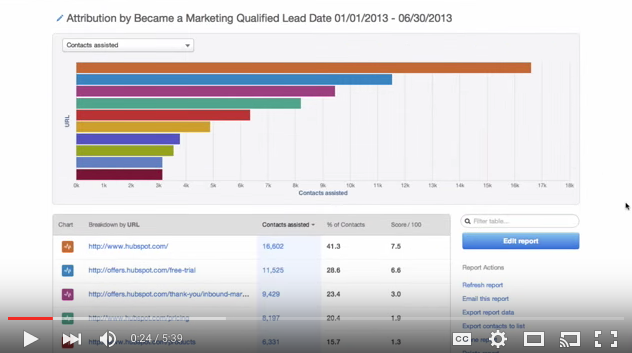One morning in 1996, I sat down at my computer and checked my email. In those distant days, most people had yet to discover email, so my morning inbox usually contained only one or two messages.
But this morning was different. I looked at my computer and blinked in amazement.
There was a list of 22 email messages in my inbox and they all had the same subject line: ‘Sale: $19.99.’ Over the previous few months, I had been building up a list of email subscribers.
The night before, I had dared to email them with an offer for the first time.
My subscribers could pick up a copy of my special report on ‘How to Get Freelance Work on the Internet’ for the introductory price of – you’ve guessed it – $19.99.
I could hardly believe it. I had made 22 sales and earned $439.78….while I was sleeping!
After years of selling my freelance writing services by the hour, this was a revelation. I decided on the spot that Internet marketing was where my future lay.
Within three months, I was making a full-time living online and I have been paying my bills the same way ever since.
20 Marketing Lessons Learned In 20 Years Of Digital Marketing
It’s been a roller-coaster ride over the last 20 years, with some spectacular highs and some challenging lows. From SEO to affiliate marketing and from membership models to Kindle publishing, I have experimented with just about every aspect of digital marketing.
Today, I am still taking on new projects as Chief Marketing Officer with Digital Muscle Media, Payoneer Brand Ambassador for Thailand and Publisher of MaxedMuscle.com.
I have learned a lot along the way and in this article I would like to share the benefit of my experiences with you.
Back in 1996, there was no Google and Yahoo was a directory that ranked sites alphabetically. Nobody had ever built a link for SEO purposes and blogging, social media and smartphones had yet to be invented.

In 1996, Yahoo was the King of Search
Building a new website meant hand-coding it from scratch in static HTML.
The Internet really was the Wild West….and it was fun to be one of the pioneers. The world of digital marketing has changed dramatically, but it’s still as much fun as ever.
So for what it’s worth, here are 20 marketing lessons learned in 20 years of digital marketing….
1. Internet Marketing is the Best Business Opportunity Ever
Now that we all use the Internet every day, it’s easy to forget how amazing digital marketing really is.
Just 20 years ago, making a living inevitably meant commuting into some dreary office or factory and trudging through a tedious day job.
Very few people had the opportunity to work from home, or to work while traveling.
Thanks to the Internet, almost anyone can now make money from almost anywhere.

digital marketing makes it possible to make a living anywhere.
As long as you can get online somehow, you can generate an income. And if you get good at this, it can be a very substantial income.
The advent of the Internet really has opened up some amazing business opportunities….we should be very grateful to be living in these wonderful times.
2. You Should Think Outside the Box
When I talk to other marketers at conferences and other events, I am always amazed at the many different ways people are making money online.
I often meet people who are making small fortunes in niches I had never heard of, or using business models that I never imagined could work.
There is more to Internet marketing than SEO and affiliate programs and there are more niches than you could explore in a thousand lifetimes.
So don’t get stuck on a rut. Instead of following the crowd, be creative and find your own way.
Experiment with niches, products, monetization strategies and marketing techniques. If you can find a furrow that no-one else is ploughing, you can rack up healthy profits very quickly.
I’ve managed to do this a few times over the years….and I am always looking for the next original idea.
3. Laser-Like Focus Gets Results
Once you have found a niche and a business model that has potential, you need to work that opportunity to the max.
Don’t be distracted by the latest shiny object, the new WSO of the Day or a crazy idea that popped into your head at 3.00am that morning.
Many online marketers suffer from chronic ADD and are tempted to keep moving from one interesting new idea to the next.
I’ve been as guilty of that as anyone, but I have learned that it is counter-productive.
Juggling multiple ventures leads to a series of half-finished projects, none of which produce any profit.
So focus on your one big idea with laser-like precision and put all your efforts into making that work.
4. Don’t Be a Dinosaur
The world of the Internet changes fast. Strategies that worked just fine three years ago may be the kiss of death today.
You must be prepared to keep moving forward, rolling with the punches and leading the way in leveraging new technologies, tools and systems.
Passive income is great, of course, but that doesn’t mean you can afford to be asleep at the wheel.
You need to keep abreast of changes and stay one step ahead of your competitors.
5. Technology Changes, but People Stay the Same
Although technology is advancing at rapid-fire rate, human beings haven’t changed at all. We all still have the same basic human needs, wants and desires.
The marketing messages that worked 100 years ago still work today….and they will still work 100 years from now.

Marketing messages that worked decades ago still work today.
If you learn to understand human behavior and response, you will be light years ahead of competitors who are focused only on technical tactics.
Combine state-of-the-art technology with time-tested marketing messages and you will have a winning formula for sure.
6. Quality Always Wins in the End
If you are looking to build an online business that is successful in the long run, you need to focus on quality.
Cutting corners on product quality or customer service might make you a few extra dollars today, but at the expense of thousands of dollars in the future.
Insist on first-class quality in every aspect of your business and your investment will be repaid many times over.
Google didn’t become the king of the search engines through clever marketing or expensive advertising. Page and Brin simply built a product that worked much better than the competition– and word of mouth did the rest.
The result? A company that went from zero to a $500 billion market cap in less than 20 years. A valuation of half a trillion dollars is not too shabby for a company started by two broke students.
If you focus on delivering quality and being the best, then your business will prosper in the long run, too.
7. Relationships Are Everything
We often here the phrase ‘the money is in the list.’ In my experience, that is only part of the story. The money is in the relationships you have with your customers, prospects, affiliates, partners and suppliers.
Your mailing list may be important, but it is just one cog in a complex business wheel.
All of these relationships are like marriages – you have to be committed to making them work.
If you take care of all these stakeholders in your business, they will take care of you in return. I am still doing business with contacts I met way back in 1996.
Over the years, we have helped each other in many different ways. We have all gained immense value from these partnerships.
So be sure to work hard on all of these relationships….they are your most valuable asset.
8. Going the Extra Mile Makes a Difference
In a world where shoddy products and indifferent service are the norm, you can set yourself apart by giving customers more than they expected.
If you give them 10% more in terms of product, support and satisfaction, they will reward you a hundredfold.
It’s no accident that I buy a ton of stuff from Amazon. Their prices, delivery times and customer service are so good that I am happy to let them ding my credit card several times a month.

Amazon got to be the biggest by being the best.
Going the extra mile was important back in 1996, but it is even more important in 2016.
Thanks to social media, happy customers can easily spread the word and generate more business for you by word of mouth.
Delight your customers and they will respond by delighting you.
9. Conversion is King.
Split-testing is rather like teenage s** – everyone is talking about it, but few people are actually doing it.
This has always amazed me, because if you get good at testing and improving your conversion rates, your profits will soar.
This is definitely an area where the potential has grown dramatically over the years.
Back in the 90s, the only testing tools available were clunky and unreliable. Today, there are dozens of great split-testing tools, plugins and services.
Every time you improve your conversion rate through testing you increase your profits – without having to spend a single extra cent on advertising, marketing or promotion.
That’s totally awesome!
10. Recurring Revenue Makes You Rich
I love membership sites. You only have to make a sale once and then you can generate revenue from that customer month after month – maybe for years.
In my experience, it is almost as easy to sell a membership for $50 a month as it is to sell a product with a one-time $50 cost. So why the heck wouldn’t you go for the recurring payment?
Customers who purchase every month are far more profitable than one-time buyers (doh!).
Always look for a business model that will bring you recurring revenue – it is the fastest route to making substantial revenues online.
The flip side of this is that recurring costs can make you poor. It’s easy to sign up for some new tool that sounds cool and interesting – and then realize a year later that you’ve shelled out $600 for a service you never used.
Go through your recurring expenses once a quarter and cancel all the ones that are not delivering real value.
11. Too Much Money Gets Left on the Table
When customers are in a buying mood, you need to be able to offer them more than one product. You’ve already paid the marketing costs and convinced your prospect to become a customer.
Now you need to leverage that sale as much as you can.
Maximize your average order value by offering them upsells and cross-sells – it will make a huge difference to your profits.
I know that when I get interested in a new topic, I often buy everything on that subject that I can get my hands on.
Anyone who has a good upsell to offer will get my business.
But if there is no second product for sale, I will simply go and buy one somewhere else.
By taking advantage of this ‘buying frenzy’ mentality, you can increase your profits and help your customers at the same time.
12. The 80:20 Rule Always Applies
The Pareto Principle says that you get 80% of your results from 20% of your activities – and this certainly applies to Internet marketing. Often the ratio is more like 95:05.
Typically, a very small percentage of your affiliates and partners will generate the vast majority of your sales.
Focus your efforts on working with them to maximize results and consider terminating the partners who take up your time without delivering much revenue.
The same principle applies to your time. Work out which of your activities actually lead to increased profits and make those your priority.
Everything else is a distraction and should be eliminated.
13. Investing in Yourself Brings Awesome Returns
Internet marketing is a business where nuggets of knowledge can be turned into big seams of revenue.
Over the years, I have spent tens of thousands– maybe even hundreds of thousands – of dollars on educating myself and acquiring new skills. I don’t consider a single cent of that money to have been wasted.
The knowledge you glean from information products, courses, seminars and conferences is the seed that flourishes into a profitable online business.
The more informed you are, the better your decisions are – and the greater your success.
But please keep point 3 in the forefront of your mind when doing this.
14. You Should Always Work Smarter, Not Harder
Success in any business, including Internet marketing, is not about working harder. It is about getting more done….but you don’t have to do all the work yourself.
Learn to delegate and to use automation to improve your efficiency.
In the last few years, outsourcing has grown into a fantastic way to fuel your business.
Now you can hire a top-quality team at rock-bottom rates and out-compete everyone who is doing business the old-fashioned way.
Nowadays, you really can relax on the beach while your outsourced team takes care of growing your business.
I know this for sure, because I often do precisely that!
15. Don’t Re-invent the Wheel
Learning from the big boys is a great way to get an easy win. The largest web properties test and optimize extensively – using their massive traffic to conduct tests quickly and still get reliable results.
The good news is that we can profit from their investment by simply observing what they do.
If Amazon is using blue links which become underlined when you hover over them, you can be sure that this setup gets them the most clicks.
Your website will be different and your mileage will vary. But emulating the big players gives you a great starting point for your own testing and accelerates the optimization process.
16. You Can Easily Beat the Lazy 99%
Everybody wants to press a button and make a million dollars overnight.
Many marketers spend a lot of time looking for short-cuts – the untapped, magic traffic source or the secret to first-page Google rankings.
Instead of looking for an easy win that probably doesn’t exist, be prepared to do what it takes to build a solid business.
That means committing to creating quality products, building a great team and delivering great service.
That way, you will leave the lazy 99% in the dust.
17. Beware of the Gurus
Internet marketing has created its own special niche of superstars – the gurus who claim to know it all and will sell you their secrets for a mere $2000 or so.
For sure, there are good guys who deliver great value in return for your money.
But there are some who know a great deal about selling information products to Internet marketers….but not a whole lot else.
Investing in your education is undoubtedly important. Just be sure you are learning from people who actually know what they are talking about.
Remember that the self-proclaimed experts are not always as smart as their marketing – test their claims before you believe them.
18. Internet Marketing Can Transform your Life.
For me, running an online business meant a chance to swap the gray skies of London for the sunny beaches of Australia.
Instead of being tied to corporate clients in the UK, I was suddenly free to live anywhere in the world.
I emigrated with my family to a beach town near Sydney and my kids spent their teenage years surfing, swimming and enjoying the good life in the sun.

My family swapped British rain for fun in the sun on Avoca Beach, New South Wales.
digital marketing really does give you the chance to create your dream life.
Especially today – with good Internet and wi-fi available almost everywhere – there is nothing to stop you living your dream life.
Go for it – I know Matthew has already done so!
19. The Opportunity Keeps Getting Bigger
The Internet marketing forums are full of doom and gloom threads.
You will often hear disgruntled marketers complaining that ‘SEO doesn’t work anymore,’ ‘the market is saturated’ and ‘it’s not as easy as it used to be.’ All of this is nonsense.
The best time ever to be an Internet marketer is….TODAY!!!
If you think Internet marketing was easy back in 1996, think again.
Back then, only 35 million people were online worldwide and more people shopped in Marks & Spencer (a UK based middle aged clothing store) in a week than had ever surfed the web.
Most people used the Internet to get information only, usually from inside walled gardens such as CompuServe. Fewer than 10% of Internet users had ever bought anything online.

To get information online in 1996, you had to pay for an expensive subscription.
Registering a domain cost $75.00 and decent web hosting for a single website would set you back $100 a month.
The search engine results were choked with spam and there were few serious affiliates to partner with.
There wasn’t much good Internet marketing information around, so you had to work things out for yourself.
Payment processing options came down to billing systems designed for p*** sites or asking customers to send a check in the mail.
Nowadays, we have access to amazing software tools, tons of social media channels and easy-to-use website software.
We are a mouse click away from the masses of valuable information offered by Google, YouTube and other resources.
We can easily create business relationships with people all over the world and communicate through chat apps, project management systems and much more. And there are many ways to get paid, too.
Heck, you can even run your entire business from the beach with a smartphone. (Yes, I sometimes do that, too!) It really doesn’t get much more awesome than that!
The opportunity today is enormous….so stop complaining and start profiting.
20. You Can Do It!
Here’s some sound advice from Arnold Schwarzenegger – ‘Ignore the nay-sayers!’ If you can scrape together ten bucks to buy a domain name, you have what it takes to get started in Internet marketing.
And if you can’t even manage that much cash, there are ways to get started for free.
Never before in history has it been possible to bootstrap a business from nothing into a potentially massive profit machine.
If Facebook’s Mark Zuckerberg can start a $250 billion company from his dorm room, you can definitely build a business that allows you to enjoy the good life.
Looking Forward to the Next 20 Years
So that’s a summary of the digital marketing lessons I have learned the hard way over the years. And although the online world keeps changing, I believe these principles will remain true for years to come.
For those of you who prefer to interpret information visually, I have condensed this article into an infographic here.
I am now two decades into my digital marketing career, but I have no intention of quitting anytime soon.
Since getting into this business, I have never had the Monday Morning blues – I enjoy every new week and the fresh challenges and opportunities that come with it.
My four children who were little kids in 1996 have now grown into adults who are building their own careers.
Two of them have already learned my marketing lessons & joined me in the Internet marketing world – one is a successful ClickBank vendor, another is a WordPress developer with a growing reputation.

My sons Ben and Sam are now Internet marketers, too.
We often work together on projects and it’s great to be able to share the pleasure and rewards of doing business online. In another 20 years, maybe we’ll have a few grandchildren on the team, too.
So if you are wondering whether you can make a career out of Internet marketing, I say you most certainly can.
Start today and in 20 years’ time you could have an empire to be proud of.
In 2036, maybe I’ll bump into you at an digital marketing conference somewhere around the world. If that happens, be sure to introduce yourself.
I might be using a Zimmer frame by then, but I will still be looking for the next deal. Maybe we can do a joint venture….I’m looking forward to it already!
That concludes my 20 digital marketing lessons, I hope they stick in the back of your mind & you put them to good use.
